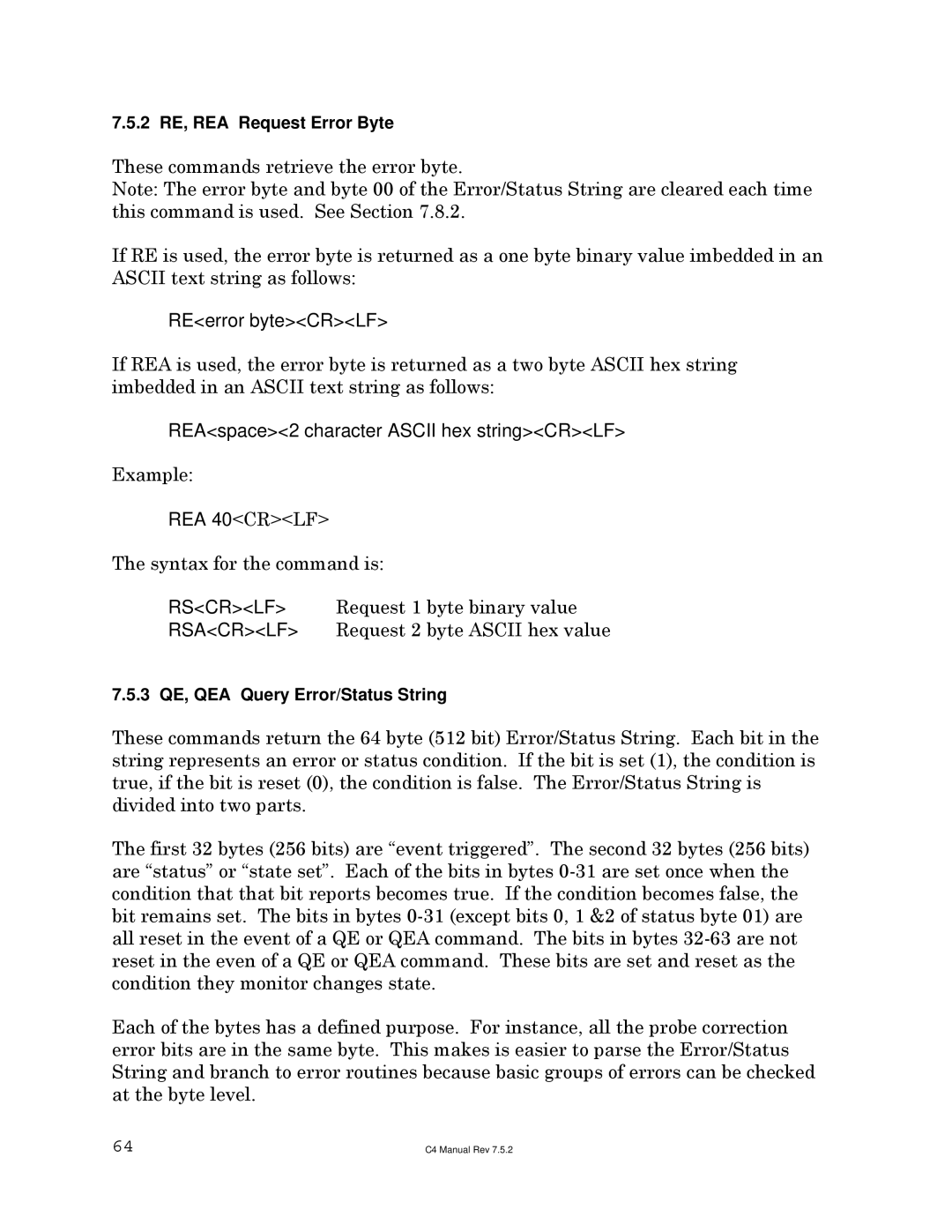7.5.2 RE, REA Request Error Byte
These commands retrieve the error byte.
Note: The error byte and byte 00 of the Error/Status String are cleared each time this command is used. See Section 7.8.2.
If RE is used, the error byte is returned as a one byte binary value imbedded in an ASCII text string as follows:
RE<error byte><CR><LF>
If REA is used, the error byte is returned as a two byte ASCII hex string imbedded in an ASCII text string as follows:
REA<space><2 character ASCII hex string><CR><LF>
Example:
REA 40<CR><LF>
The syntax for the command is:
RS<CR><LF> Request 1 byte binary value
RSA<CR><LF> Request 2 byte ASCII hex value
7.5.3 QE, QEA Query Error/Status String
These commands return the 64 byte (512 bit) Error/Status String. Each bit in the string represents an error or status condition. If the bit is set (1), the condition is true, if the bit is reset (0), the condition is false. The Error/Status String is divided into two parts.
The first 32 bytes (256 bits) are “event triggered”. The second 32 bytes (256 bits) are “status” or “state set”. Each of the bits in bytes
Each of the bytes has a defined purpose. For instance, all the probe correction error bits are in the same byte. This makes is easier to parse the Error/Status String and branch to error routines because basic groups of errors can be checked at the byte level.
64 | C4 Manual Rev 7.5.2 |
